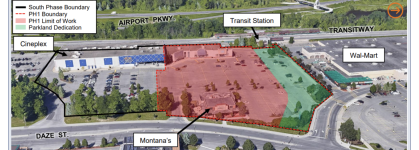- Reaction score
- 9,522
- Points
- 1,160
Zoning, NYMBYism, political issues etc. I suspect every city also has its peculiar issues compounding it (Ottawa has the never ending issue with the NCC as an example)
Calgary is no surprise, they’ve been have issues for some time.
This article outlines some issues Calgary has been having and why.
That was enlightening. In Lethbridge Calgary is a foreign land these days.
One of the advantages of Canadian construction practices is that wooden houses are not built to last. They seldom outlast the generation for which they are built. The tendency has been for new homes to be built on the outskirts and for the value of the interior homes (as opposed to the value of the land on which they sit) to fall. That alone presents opportunities for new developments. In Calgary the area around CFB Currie is a great example.
Conservatives can progress. We just prefer to progress conservatively.




